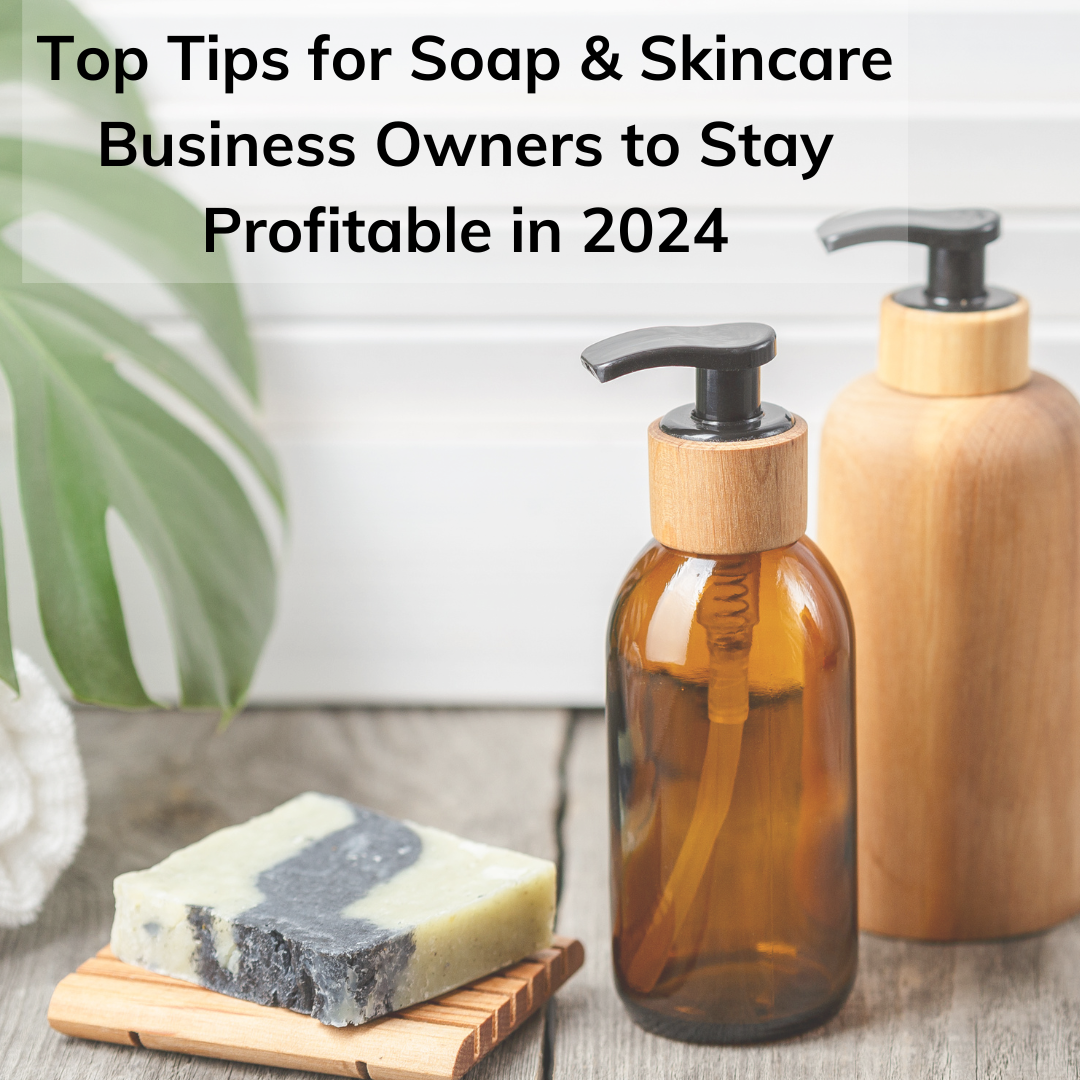Top Tips for UK Soap and Skincare Business Owners to Stay Profitable in 2024

How to ensure your soap and skincare business remains profitable in 2024 and beyond.
With the recent price hikes on cocoa butter and the ongoing olive oil crisis, the costs of raw materials are soaring yet here in the UK we don't have a lot of options other than to buy these ingredients. I understand how tough it is out there, however I've got several actionable tips that can help you improve your profit margins, whether by reducing costs or increasing your profits.
This is blog is an overview of a video I have created on the topic . If you prefer to watch rather than read you can find it here.
1. Reduce Raw Material Costs
First things first, let's talk about reducing the cost of your raw materials. This may sound easier said than done, but there are effective strategies:
- Shop Around Don't stick to one supplier out of habit. For example, you don't need to buy sodium hydroxide from a soap supplier. Chemical suppliers often offer it much cheaper in bulk. I have used companies such as Jennychem and NCS in the past.
- Evaluate What You Buy For example, if you're buying organic cocoa butter but not marketing your products as organic, switch to non-organic cocoa butter to save costs.
- Buy in Bulk Larger quantities often come at a lower price per unit. Just be mindful not to overstock and tie up cash in raw materials that could expire before you use them.
- Reduce Postage Costs By consolidating your orders to one supplier, you might qualify for free shipping or save on postage fees.
2. Focus on Profitable Products
Focus on your most profitable products. Even if you love making a particular product, like shampoo bars, evaluate if they are worth your time and resources
- Analyse Sales and Costs Identify which products sell well and have the best profit margins. Consider discontinuing products that are costly to make and don't sell as well.
- Adapt to Market Demand: It's okay to evolve your product line based on profitability and customer demand. Introduce new, profitable items that align with your brand. Think about Apple - if they stuck to selling Ipods they would be out of business by now!
3. Reformulate
Sometimes, you might need to reformulate your products to stay profitable.
- Streamline Formulations If a formulation is expensive or time-consuming, consider tweaking it to reduce costs or simplify production without compromising quality.
- Flex Assessments Consider flexible assessments for new products, which can save you time and money when expanding your line. Investing in new assessments will cost you in the short term but benefit you in the longer term.
4. Custom Orders
Consider custom or made-to-order options like wedding favors or subscription box items. This approach can improve cash flow and reduce the risk of unsold stock:
- Set Minimum Orders For custom orders, set a minimum quantity to make it worth your while.
- Use Standard Designs For small custom orders, stick to your existing designs and scents to streamline the process.
5. Streamline Processes
Efficiency is key. Streamline your processes to save time and money. Your time is your most valuable asset, use it wisely.
- Batch Production Make products in larger batches and prepare ingredients in advance.
- Dedicated Production Days Schedule specific days for making products to minimise setup and cleanup time.
6. Portion Control
Implement portion control to manage costs effectively.
- Weigh Products Accurately Ensure you're not over-delivering on product weight. For example, if your soap bars are supposed to be 100g, avoid making them 130g.
- Adjust Batch Sizes Gradually reduce batch sizes by small percentages to see savings without noticeable impact on the product.
7. Pricing
Pricing can be a challenging aspect, but it's crucial to get it right.
- Review and Adjust Prices. Don’t hesitate to increase prices if necessary. You don’t need to announce it; just make the change.
- Recalculate Costs. Regularly update your cost calculations to ensure your pricing remains profitable, especially for wholesale.
8. Review Sales Channels
Maximize your sales channels to boost revenue.
- Utilise E-commerce Tools Platforms like Shopify offer apps that can help upsell products at checkout.
- Create Bundles and Gift Sets Encourage higher order values by offering product bundles or gift sets.
- Offer Discounts Strategically Use discount codes to incentivise larger purchases without devaluing your products.
Conclusion
There's a lot to consider, but implementing even a few of these tips can make a significant difference to your bottom line. Remember, these changes are about the business, not you personally. Once you separate yourself from the business decisions, it becomes easier to make these necessary adjustments. If you have any questions or need more guidance, feel free to reach out.
Leave a comment